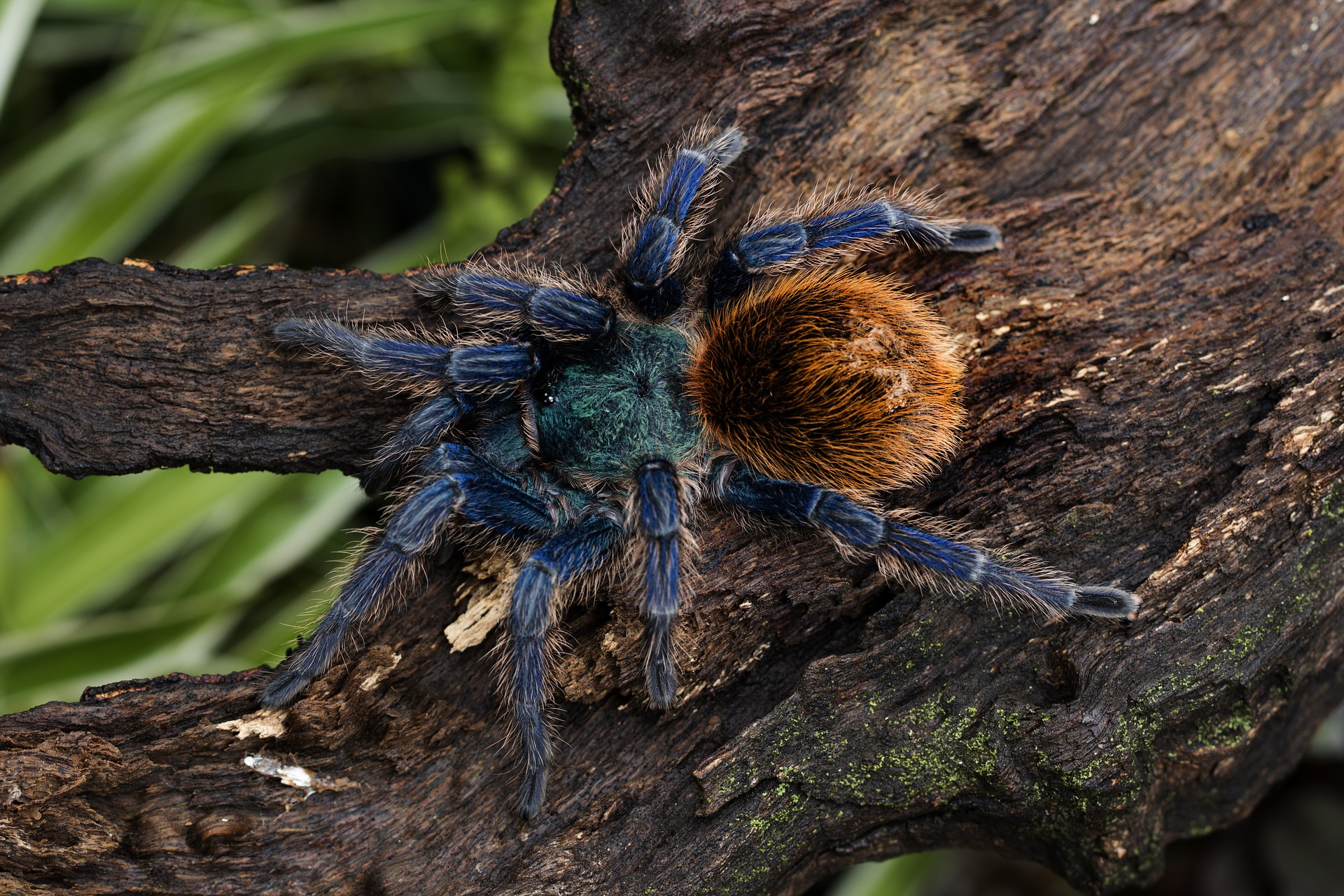

Greenbottle Blue TarantulaĬhromatopelma cyaneopubescens – The Greenbottle Blue tarantula is actually frequently compared to the Brazilian Blue Tarantula. If you’re looking for a blue tarantula with a little something extra, this “accent abdomen” is the way to go! 2. However, what makes this species unique is that it has red setae on their abdomen that contrast the blue color excellently. Pterinopelma sazimai – A beautiful blue tarantula with a bit of a twist to it! Females of this species are a very rich, deep blue all over their entire bodies.

Seeing this blue coloring in person is something that you’ll never forget. The Gooty Sapphire Ornamental tarantula really lives up to the “sapphire” in its name.Ī rich, royal blue color covers this tarantula, and it’s only broken up by a white streak down the middle of the carapace/abdomen and white/yellow markings on its legs. Poecilotheria metallica – Easily one of the most popular tarantulas out there today due to its good looks, rarity, and temperament. While this tarantula only grows to be about 2.5″, its stunning blue color makes it very easy to spot.

While this tarantula has different shades of blue on its carapace, lets, and abdomen, blue isn’t the only color on it! It also features a myriad of shades of red, yellow, black, and everything in-between. Typhochlaena seladonia – One of the most expensive tarantulas in existence today, the Brazilian Jewel tarantula is truly a jewel to enthusiasts.

The tips of its legs have the characteristic pink coloring that pinktoe tarantulas have - a color that makes the blue color in this tarantula really pop! 5. Its abdomen is near-black with a subtle blue coloration to it as well. Essentially, this is a pinktoe tarantula with beautiful blueish-green coloring evenly covering its entire body.Īdults are a deep blue color that looks almost iridescent in direct sunlight. Brazilian Blue & Green Pinktoe TarantulaĪvicularia geroldi – The common name of this tarantula, the Brazilian Blue & Green Pinktoe tarantula, is quite descriptive. This species also has a very fiery personality, acting quite aggressive and moving with impressive speed. Its rich blue legs contrast its tan body, and it appears to have a gradient of light blue at its carapace to dark blue at the tips of its feet. Unlike most other baboon spiders, this tarantula has incredible coloration. Monocentropus balfouri – This tarantula species actually won Best In Show in the 2014 British Tarantula Society Exhibition, and it’s quite clear why that is! Combine that with the fact that this tarantula grows to a legspan of about 9″… it’s just crazy! 7. The variation in different shades of blue across the body of this tarantula is really something to behold. As they age, males shift in color from blue to either green or yellow. Lampropelma violaceopes – This is a very large old world arboreal tarantula that has become a favorite in the tarantula trade due to its incredible blue appearance.įemales are a rich blue with a darker abdomen, while males are slightly less vibrant. So, while this tarantula can’t be owned right now, it’s certainly something to admire. All of its legs are a stunning electric blue that contrast its toffee-colored body.Īs it stands, this tarantula isn’t being captively-bred, so any specimens are illegally imported from abroad. In fact, its genus name comes from the Malay word “biru”, meaning “blue”. This newly-discovered tarantula is the first in its genus, Birupes. Birupes simoroxigorumīirupes simoroxigorum – This tarantula doesn’t have a common name yet due to the fact that it’s so new, but it absolutely needed to be included in this list. So, not only do you get a great display species, but you also get a tarantula that’s always entertaining! 9. In addition to its beautiful blue color, it’s also a very spunky tarantula with a great personality. This blue coloration only gets more pronounced as it ages, making this a tarantula species that ages like fine wine. Electric Blue is known for its bright blue front legs and pedipalps that shimmer and shine in direct light. Electric Blue TarantulaĬhilobrachys dyscolus – This is a tarantula that’s become very popular as of recent, and for a very good reason! Chilobrachys sp. So, without further ado - let’s get into the 10 best blue tarantulas! 10. You may find a particular blue tarantula more stunning than others. While they’re definitely beautiful, this post features the tarantulas that exhibit the most blue coloring.Īs far as the ranking goes… that’s more personal preference. There are a decent amount of tarantulas that have blue somewhere on their bodies.


 0 kommentar(er)
0 kommentar(er)
